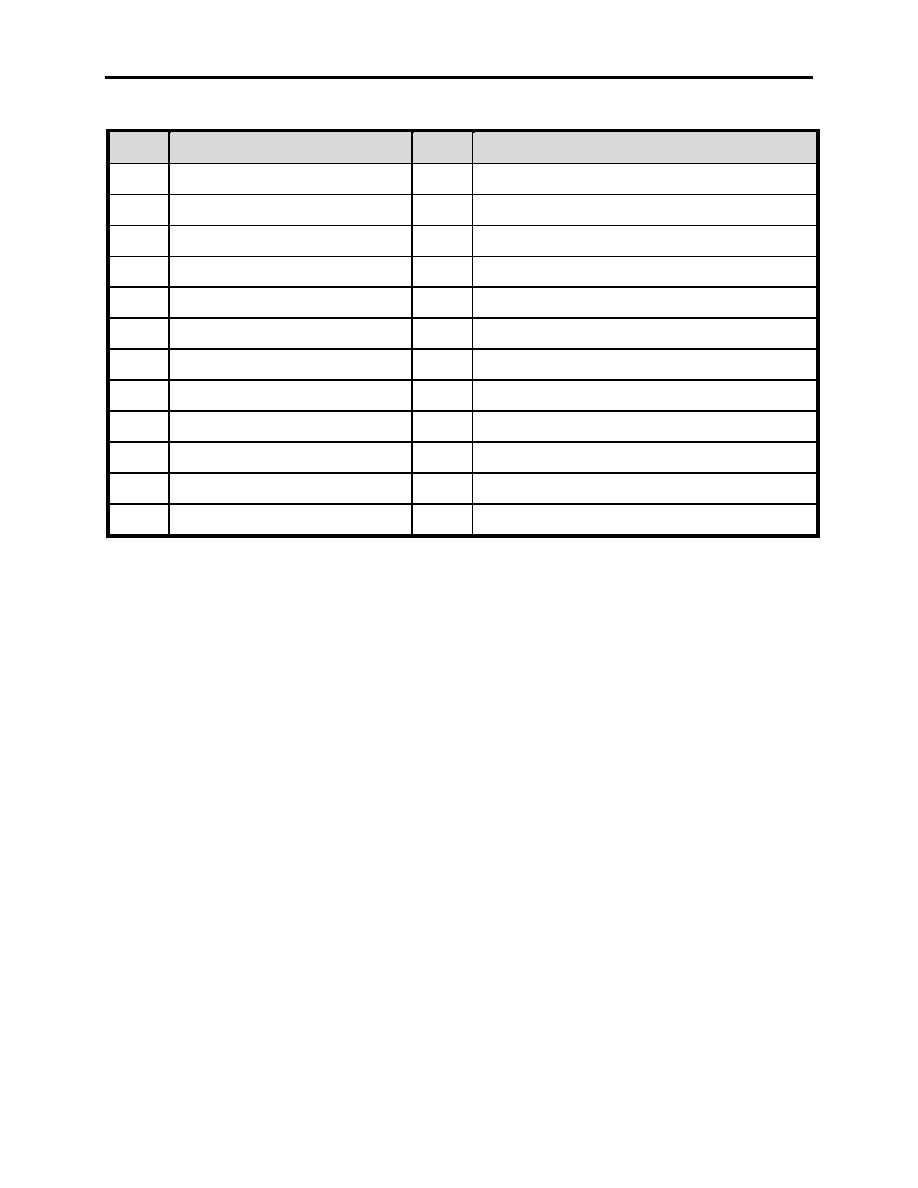 |
|||
|
|
|||
|
|
|||
| ||||||||||
|
|  CHAPTER ONE
METEOROLOGY FLIGHT PLANNING
IC
TYPE OF ICING
B
TYPE OF TURBULENCE
Code
Description
Code
Description
0
No icing
0
None
1
Light icing
1
Light turbulence
2
Light icing in cloud
2
Moderate turbulence in clear air, occasional
3
Light icing in precipitation
3
Moderate turbulence in clear air, frequent
4
Moderate icing
4
Moderate turbulence in cloud, occasional
5
Moderate icing in cloud
5
Moderate turbulence in cloud, frequent
6
Moderate icing in precipitation
6
Severe turbulence in clear air, occasional
7
Severe icing
7
Severe turbulence in clear air, frequent
8
Severe icing in cloud
8
Severe turbulence in cloud, occasional
9
Severe icing in precipitation
9
Severe turbulence in cloud, frequent
X
Extreme turbulence
Figure 1-26 TAF Icing and Turbulence Codes
Turbulence Group
This group is similar to the icing group because it consists of six characters and follows the same
format. The turbulence group, however, begins with a "5," and the second digit represents the
turbulence intensity, also from Figure 1-26 (above). The turbulence group is used to forecast
non-thunderstorm turbulence (the presence of thunderstorms implies moderate or greater
turbulence) and repeated as often as necessary to indicate multiple turbulence layers. The group
is omitted if no turbulence is forecasted. The example below illustrates the decoding of the
turbulence group: 510302
Following the same rules as the icing group, above, one would expect light turbulence from 3000
to 5000 feet AGL.
Altimeter Group
This group forecasts the lowest expected altimeter setting in inches of Hg (Mercury) during the
initial forecast period and each subsequent BECMG and FM group (to be discussed shortly) that
follows. TEMPO groups (also to be discussed shortly) do not forecast the QNH group. This
minimum altimeter setting becomes quite valuable when aircraft lose radio communications in
IMC conditions and need a useful altimeter setting for the destination airfield (Figure 1-27).
1-22 AVIATION ROUTINE WEATHER REPORTS AND TERMINAL AERODROME
FORECASTS
|
|
Privacy Statement - Press Release - Copyright Information. - Contact Us |